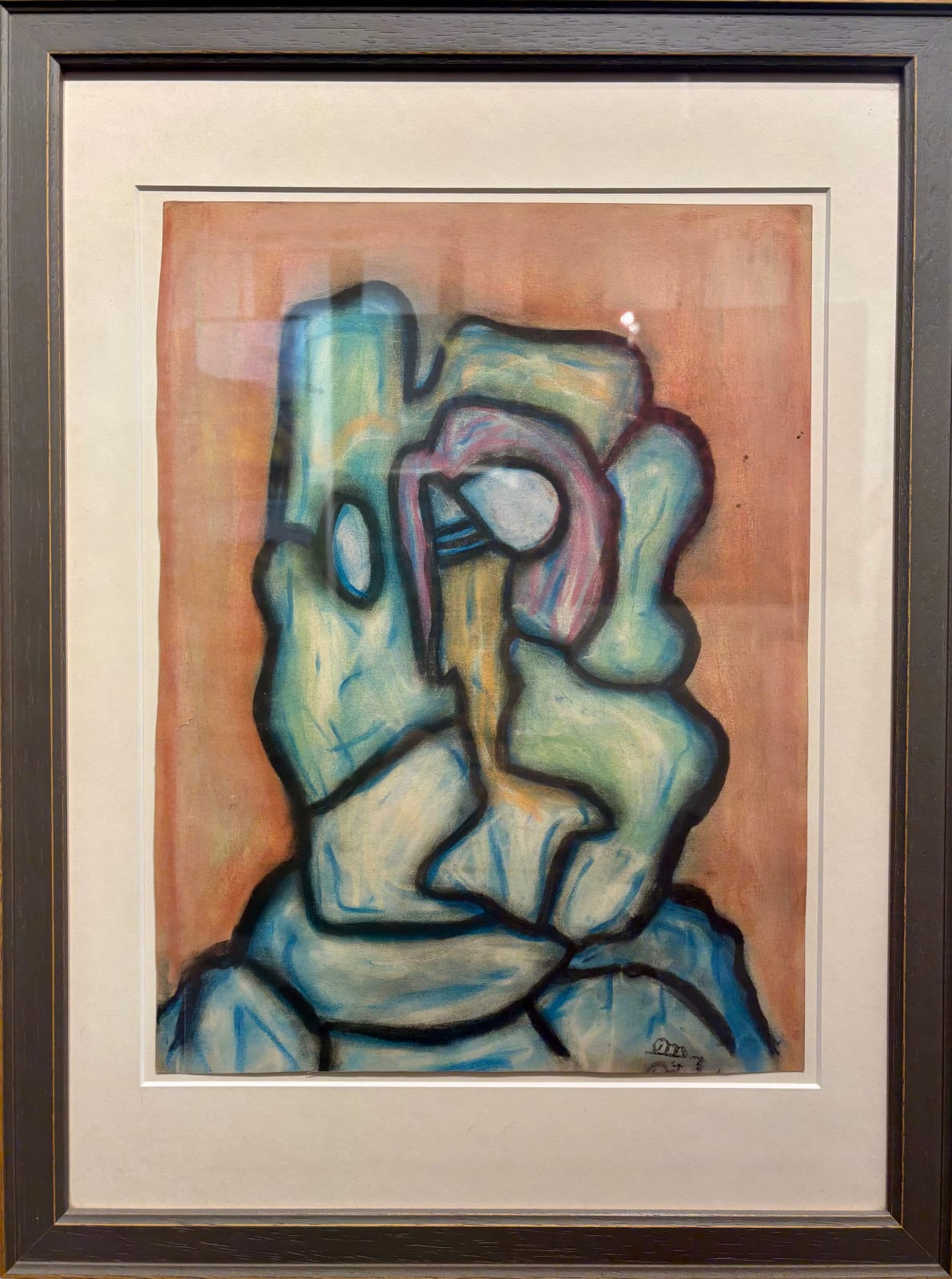Desmond Morris British, b. 1928
Completed January 1947
Medium: Pastel on paper. 15 x 12 in., 38 x 30.5 cm.
This is the first of a series of pastels of human heads, four of which survive, where the images appear to be assembled from a collection of irregular, interlocking segments resembling biological cells. A similar device was used, much later, in the 1960s, by Jean Dubuffet.
Exhibition: Swindon Public Library, January 1948, no. 1
Publication: Catalogue Resume, p94/95
Completed in January 1947, 1947/1 Portrait is the first of a rare series of early pastels by Desmond Morris, marking the genesis of the artist’s lifelong exploration of organic abstraction and surreal figuration. In this composition, the human head is reimagined as a collection of irregular, interlocking biomorphic forms — structures that appear almost cellular in nature. These early works foreshadow the mature visual language Morris would develop in the 1950s, as well as the biological surrealism later echoed by artists such as Jean Dubuffet.
The pastel’s soft yet deliberate contours convey an intimate psychological depth, while its segmented structure hints at Morris’s scientific curiosity and his fascination with anatomy, evolution, and perception. This rare surviving work from the late 1940s exemplifies his early synthesis of science and surrealism, a dialogue that would define his dual careers as artist and zoologist.
Artist BiographyDesmond Morris (born 1928, Purton, Wiltshire) is one of Britain’s most distinctive surrealist artists — as well as a renowned zoologist and author. Educated at the University of Birmingham and later the University of Oxford, where he earned a PhD in animal behaviour, Morris achieved international fame with his landmark book The Naked Ape (1967), which examined human behaviour from a zoological perspective.
Parallel to his scientific career, Morris developed a powerful surrealist visual language, influenced by Dalí, Miró, and the biomorphic abstraction of post-war Europe. His paintings explore the subconscious through fluid, dreamlike forms that merge human, animal, and cellular structures — a reflection of his fascination with evolution and the continuity of life.
Since his first exhibition at Swindon Arts Centre in 1948, Morris’s work has been shown internationally, including in London, New York, and Tokyo, and continues to attract critical attention for its originality and intellectual depth.
Collector’s NoteEarly works such as 1947/1 Portrait hold particular significance within Desmond Morris’s oeuvre. They capture the formative moment where his artistic and scientific sensibilities began to merge — a rare and highly sought-after phase preceding his public acclaim as both artist and author. The survival of just four related head studies from this period underscores the rarity and historical importance of this pastel, making it a museum-quality acquisition for collectors of British surrealism and post-war abstraction.
Join our mailing list
* denotes required fields
We will process the personal data you have supplied to communicate with you in accordance with our Privacy Policy. You can unsubscribe or change your preferences at any time by clicking the link in our emails.




